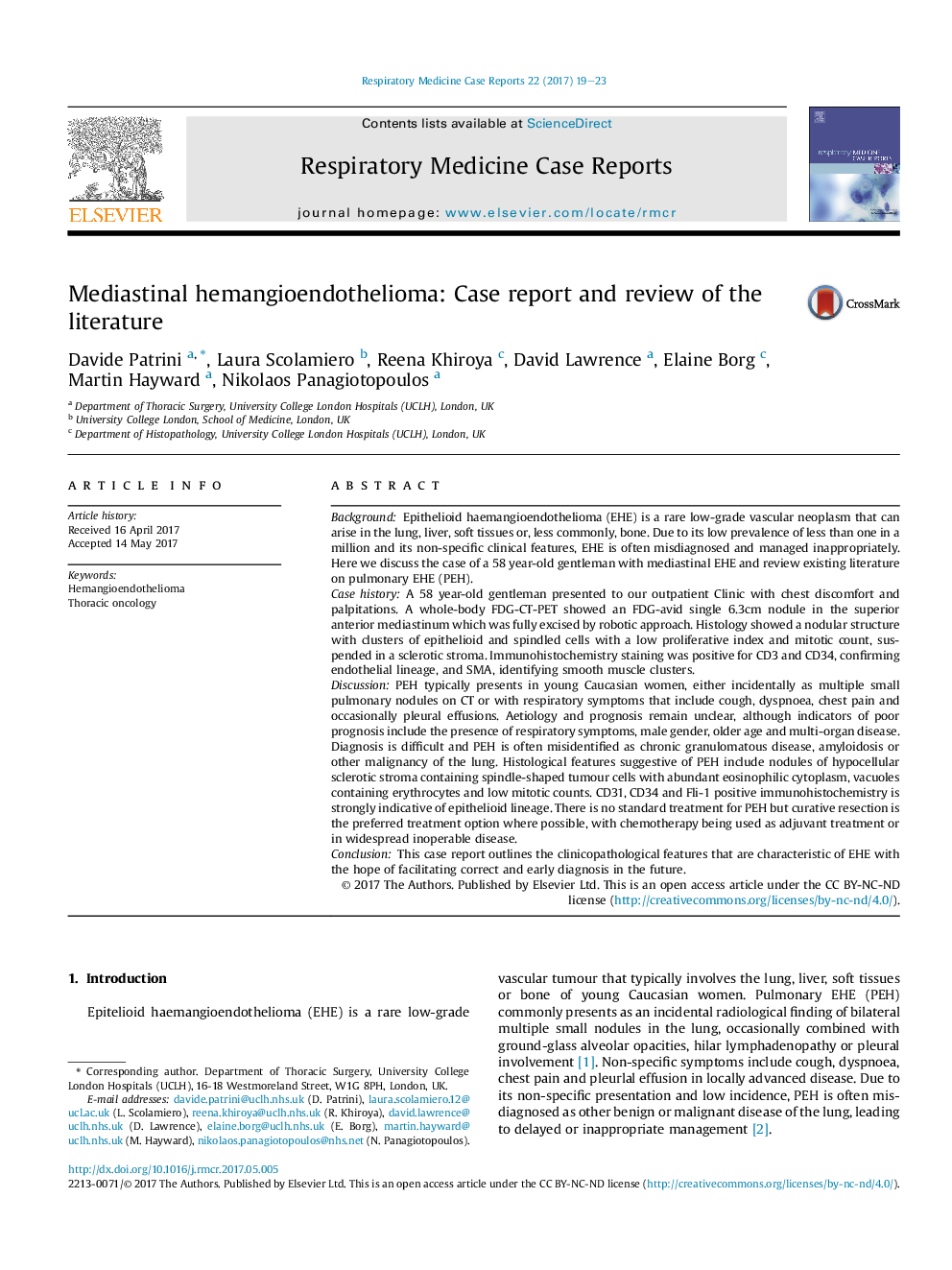| کد مقاله | کد نشریه | سال انتشار | مقاله انگلیسی | نسخه تمام متن |
|---|---|---|---|---|
| 5725063 | 1609461 | 2017 | 5 صفحه PDF | دانلود رایگان |

BackgroundEpithelioid haemangioendothelioma (EHE) is a rare low-grade vascular neoplasm that can arise in the lung, liver, soft tissues or, less commonly, bone. Due to its low prevalence of less than one in a million and its non-specific clinical features, EHE is often misdiagnosed and managed inappropriately. Here we discuss the case of a 58 year-old gentleman with mediastinal EHE and review existing literature on pulmonary EHE (PEH).Case historyA 58 year-old gentleman presented to our outpatient Clinic with chest discomfort and palpitations. A whole-body FDG-CT-PET showed an FDG-avid single 6.3cm nodule in the superior anterior mediastinum which was fully excised by robotic approach. Histology showed a nodular structure with clusters of epithelioid and spindled cells with a low proliferative index and mitotic count, suspended in a sclerotic stroma. Immunohistochemistry staining was positive for CD3 and CD34, confirming endothelial lineage, and SMA, identifying smooth muscle clusters.DiscussionPEH typically presents in young Caucasian women, either incidentally as multiple small pulmonary nodules on CT or with respiratory symptoms that include cough, dyspnoea, chest pain and occasionally pleural effusions. Aetiology and prognosis remain unclear, although indicators of poor prognosis include the presence of respiratory symptoms, male gender, older age and multi-organ disease. Diagnosis is difficult and PEH is often misidentified as chronic granulomatous disease, amyloidosis or other malignancy of the lung. Histological features suggestive of PEH include nodules of hypocellular sclerotic stroma containing spindle-shaped tumour cells with abundant eosinophilic cytoplasm, vacuoles containing erythrocytes and low mitotic counts. CD31, CD34 and Fli-1 positive immunohistochemistry is strongly indicative of epithelioid lineage. There is no standard treatment for PEH but curative resection is the preferred treatment option where possible, with chemotherapy being used as adjuvant treatment or in widespread inoperable disease.ConclusionThis case report outlines the clinicopathological features that are characteristic of EHE with the hope of facilitating correct and early diagnosis in the future.
Journal: Respiratory Medicine Case Reports - Volume 22, 2017, Pages 19-23